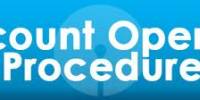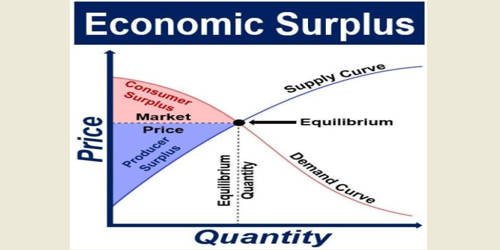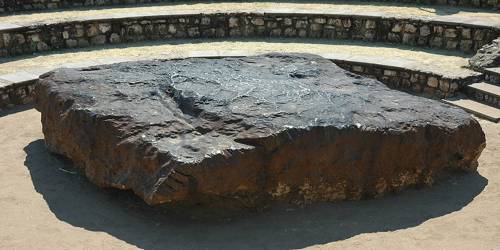General Banking
General Banking Department is considered as the direct customer service center. It is the starting point of all the banking operation. It opens new accounts, remits funds, honor chaque, takes deposits, issues bank draft and pay order etc. general Banking is also known as retail banking. Following are the major banking:
- Account opening section
- Clearing section
- Cash section
- Remittance
Account Opening
It is a customer service section. Here three employees of the bank are always ready to serve their customers. In this section people come to open different kinds of accounts, and schemes.. They are very friendly and cordial to their clients. Here the employees also issue new checkbooks, help customer to open various types of a/c, and help customers about various types of d deposit scheme etc. They also use computer for posting purposes below is list of who can open different types of account:
- Individual
- Sole proprietorship
- Partnership Firm
- Private/Public limited companies
- Clubs
- Societies
Necessities of Opening Bank Account
Safety preservations
- Creation of savings attitude
- Facilities of risk less income
- Formation of national capital
- Economic development
- Establishment of social securities
Types of Account
A. Savings Accounts.
1. Individual A/C
2. Joint NC
3. Non trading concern.
B. Current Accounts
1. Individual A/C
2. Proprietorship A/C
3. Partnership NC
4. Limited Company NC
C. Fixed Term Deposit (FDR)
D. Short Term Deposit (STD)
E. Special Savings Deposit Scheme (SSS)
F. Special Deposit Scheme (SDS)
Saving Account
Savings account is meant for those who want to save a certain amount of their income and earn interest on that for future needs. All features are more or less like that of CD a/c except for some restriction that is imposed by the bank. Number of withdrawals over a period of time is limited. The withdrawing amount is not to exceed 25% of the total balance.
Current Account
Individuals, sole proprietorship firm, partnership firm, limited companies be it private or public, clubs, societies etc may open current deposits accounts. Current accounts are most suitable for all types of organizations since frequent withdrawals do not result in a penalty. There is no interest earned from current deposit account.
Short Term Deposit
Short-term deposits accounts are special notice account, which are kept under short term deposit ledger. The rate of interest on STD is subject to change from time to lime. Any
With drawls from this account require seven-day prior notice.
Fixed Term Deposit
Deposit for a fixed period specified in advance. The banks not maintain cash reserves against this deposit. The bank offers higher rates of interest on FDR. Minimum deposit is Tk 10,000/-.
Special Saving Scheme (SSS):
A SSS customer has to deposit fixed amount of money each month for a definite period of time, normally for 5 to 10 years. A depositor can open a SSS account for deposit of Tk., 500/-, Tk.1000/-, Tk. 2,500/-, Tk. 5,000/-, Tk.10, 000/- etc in each month.
Requirements and Documents needed for opening Bank Account
A. Savings Accounts
1. Photographs (2 Copes)
2. Nationality Certificate
3. Tax Identification Number (if any)
4. Passport Photocopy (if any)
5. Introducers A/C Name & A/C No.
B. Current Accounts: Individual
1. Photographs (2 Copies) attested by Introducer
2. Nationality Certificate
3. Introducer’s A/C Name & A/C No.
4. Transaction profile
5. Opening Deposit of Tk. 5000.00 (Min)
C. Current Accounts: Proprietorship
1. Photographs (2 Copies) attested by Introducer
2. Nationality Certificate
3. Transaction profile
4. Introducer’s A/C Name & A/C I
5. Trade License
6. Opening Deposit Tk.5000.00 (Mm)
D. Current Accounts: Partnership
1. Photographs (2 Copies) attested by Introducer
2 Nationality Certificate of each Partner
3. Transaction. Profile
4. Introducer’s A/C Name and A/C No.
5. Opening Deposit Tk.5000.00 (Min)
6. Trade License
7. Partnership Deed
E. Current Accounts: Limited Company
1. Photographs (2 Copies of MD attested by Introducer
2. Nationality Certificate of MD
3. Introducer’s A/C Name, & A/C No.
4. Trade License
5. Memorandum of Association
6. Articles of Association
7. Certificate of Incorporation
8. Certificate of Commencement (In case of the Public Limited Coj
9. Resolution
10. Transaction profile
11. Opening Deposit Tk. 5000.00 (Min)
Account Opening Procedure
The relationship between banker and his customer begins with the opening of an account. Initially all the accounts are opened with a deposit of money by the customer and hence these accounts are called deposit accounts.
The deposit liabilities of a banker are classified into two categories:
- Time liabilities or term deposit
- Demand liabilities or demand deposit
Time liabilities or term deposit:
Term deposits are included all those deposits which are deposited with the bank for a fixed period specified in advance such as fixed deposits or ten deposits. NCCBL provides different types of term deposits service to their customer such as-
- Fixed Deposit Receipt (FDR)
- Sanchay Patra
- Short Term Deposit (STD)
- Barrier Certificate Deposit (BCD)
- Special Saving Scheme (SSS)
Fixed Deposit Receipt:
Fixed deposit accounts are repayable after the expiry of the predetermined period fixed by the customer. The period of the FDR ranges from three months to one year. Longer the period, the rate of’ interest is higher. Amount of FDR is payable once a time. If the client does not withdraw the amount and give’ further instructions for renewal within one month from the date of maturity, then the FDR account would get renewed for a further three months and the rate of interest would prevailing rote for fixed deposit.
Rate of Interest on Deposit offered by the Bank
| Types of Deposit | Rate of Interest (0/0 per annum) |
| •FDR for(1/ 3/6/12) months | 12.50% |
| •Short Term Deposit | 6% |
| •Instant Earning Term Deposit | 11% |
| • Savings Bank Deposit | 7% |
| • Special Deposit Scheme | 12% |
| •Current Account | Nil |
These deposits are made for a fixed period specified in advance. The bank doesn’t
maintain cash reserve against these deposits.
- Here we will discuss four steps:
- Opening of FDR
- Loss of FDR
- Closing of FDR
- Different types of payment procedure
Opening of FDR:
The depositor has to fill in an application form wherein he mentions the amount of deposit. The period for which deposit is to be made and the name in which the fixed deposit receipt is to be issued. In case of a deposit in joint names, the banker also takes the instructions regarding payment of money on maturity of deposit. The banker also takes the specimen signatures of the depositor(s). A FDR is then issued to the depositor acknowledging receipt of the sum of money mentioned therein. It also contains the rate of interest and the date on which the deposit will fall due for payment.
Closing of FDR: If a FDR holder wants to take interest after maturity, banker should consider the following rates:
- There is an access duty rate for different deposit amount-
| Category of deposit | Access duty (Tk/-) |
| Up to 1,00,000 | 120/- |
| Up to 10,00,000 | 250/- |
| Up to l core | 550/- |
- Tax deduction rate is 15%
- Process to know interest rate of any matured FDR:
Fixed deposited amount=”X”
Process to know interest rate of any matured FDR= (“X” x interest rate) x 15% tax deduction- access duty
Depending on clients requirement whether they want pay order, cash or cheque banker will prepare a voucher.
Different payment procedure:
- Payment on before maturity: It may be happened that a client who has a three months basis FDR for one year, wants to close his/her FDR in 7th month. In this situation client will get 6 months interest from his deposited amount.
- Payment on death/ deceased account: If a FDR holder die before closing re FDR, then- Nominee can get the deposited amount with interest, or by succession certificate FDR holder’s family can get the money (here court will decide who will get how much)
- Interest on overdue deposit: A banker is legally not bound to pay interest on fixed deposit after its maturity. However, according to the directives of the Bangladesh Bank (BB), the bank at its discretion shall pay interest for overdue period on such deposits subjects to the following conditions:
- The deposit is renewed with effect from date on which it matured for payment. The rate of interest allowed for such period does not exceed the rate of interest applicable to the period for which deposit has been renewed.
Loss of FDR: If the FDR holder lost his/her FDR block following process s/he has to take:
- First he/she will do G.D in the police station.
- H/O will send this information to every branch
- If the banker doesn’t find any discrepancy then a duplicate copy of the FDR will be given to the FDR holder.
- FDR holder will also sign in a bond where it is written that if s/he fined their FDR receipt later they can’t claim for it.
- Write an application to the bank to inform it.
- Branch will inform it to the H/O
- Branch will give reply to this letter
Short Term Deposit (STD)
It is similar to Current account. Main difference between CD account and STD is STD a/c holder doesn’t get any interest on below 10 lac taka and get 4% interest over 10 lac or above amount in a daily basis.
Barrier Certificate Deposit (BCD)
It is another kind of deposit account. Here verification is less important as it is highly emphasized in FDR. Bank is bound to give money, which will carry the BCD block. Interest of BCD is calculated when a person deposit the money or at the beginning. (Principal * 100)/(100 + Rate of interest)=(1,00,000 * 100)/(100 + 8.50%)= 92,165.89 Client will give Tk. 92,165.89 to the bank and after one year bank will return Tk. 1,00,000.
Special Saving Scheme (SSS):
A SSS customer has to deposit fixed amount of money each month for a definite period of time, normally for 5 to 10 years.
A depositor can open a SSS account for deposit of Tk., 500/-, Tk.1000/-, Tk. 2,500/-, Tk. 5,000/-, Tk.10, 000/- etc in each month. The depositor has to deposit the required amount of money within 10th day of each month. Customer may deposit his money either in cash or cheque. The depositor can select more than one nominee for this account. A depositor can withdraw the total amount of deposit with interest at a time after a specific period of 5 or 10 years. The rate of installment (SSS) at 12% (5 years)& 13%(10 years)
The depositor(s) will get following amount after maturity of SSS account.
| Sl. No | Monthly installment (Taka) | Amount to be Paid on completion of | |
| 5 Years (Taka) 9.5% | 10 years (Taka) 10% | ||
| 1 | 500 | 40,500 | 1,10,750 |
| 2 | 1,000 | 81,000 | 2,21,500 |
| 3 | 1,500 | 1,21,500 | 3,32,250 |
| 4 | 2,000 | 1,62,,000 | 4,43,000 |
| 5 | 2,500 | 2,02,500 | 5,53,750 |
| 6 | 3,000 | 2,43,000 | 6,64,500 |
| 7 | 5,000 | 4,05,000 | 11,07,500 |
| 8 | 10,000 | 8,10,000 | 22,15,000 |
Demand liabilities or demand deposit:
The amount which is payable on demand is called demand deposit account.
There are two types of demand deposit account:
- Savings account
- Current account
To open a SB a/c or CD a/c bank will give following forms to the client:
- One application form
- One nominee form
- One transaction profile
- One knowledge about your customer (KYC)
- One specimen signature card- client can give any special instruction through this card
- SB a/c holder cannot introduce the CD a/c holder but CD a/c holder can introduce SB a/c holder.
- They will also register it into the computer
- Bank will send thanks letter to every new account holder
Issuing cheque book:
If any one wants to issue cheque book s/he have do following steps:
- Issuer has to fill up (name, date and sign) a clip.
- Respondent will put the serial no (e.g. 1428971) and to (e.g. 1428980) with date in the clip.
- Respondent will write the name of the issuer in each cover page and also in the recognition page.
- Respondent put the account number in every page including cover page and also give signature in every page.
- Give issuing date and seal of the bank with branch name.
Closing of bank account:
A customer’s account with a banker may be closed in the following circumstances:
- The customer may inform the banker in writing of his intention to close the account. The banker cannot ask for his reasons of such closure. It should immediately ask the customer to return the unused cheques and close the account.
- The banker may itself ask the customer to close his account when the banker finds that the account has not been operated for a long time. A notice to that effect can be given to the customer.
- In case the customer does not come forward to close the account in spite of getting notice for closure of account from the banker, the banker should give a second notice to him stating it clearly that in case he himself does not close his account by a specific date the banker himself will close that account.
- In case the customer does not close the account by the specified date, the banker should by a draft send to him the money lying in his account.
- In the following cases, the banker should suspend all payments from the customer’s account till the matters are finally settled.
- When the banker receives notices of customer’s death or insanity.
- When the customer becomes insolvent or in case of a company, it goes into liquidation. In such cases the money standing to the credit of the customer will be transferred to the official received or the official liquidator as the case may be.
- When the banker receives a garnishee order (A court order attaching the belonging to the judgment debtor in the hands of the third party. The garnishee upon whom the order is served holds the assets of the judgment debtor until legal proceedings determine who is entitled to the property. The order is effective from the moment it is served).
- When the banker receives notice from the customer regarding assignment of the balance standing to the credit of his account by him to a third party. The banker is such a case is bound to pay the money to the third party.
Major limitations of Account Opening Section
- Lack of effective deposit scheme
- Rate of interest is very competitive
- No special & effective deposit scheme comparing other bank
- Customers are not aware about these deposit schemes of this bank
- There are no promotional activities about this product.
Account statement:
Any company or individuals may want to know their balance. For that they have to provide their account no and staring and ending date of transaction they want to know. The procedure is they will write this information to the register khata and receive the computer printed statement by giving signature.
Cash Section
Cash
Cash department is an important department of any bank. Cash amount is the main source of all banking activities. For that every day bank has to remain certain amount in cash in accordance with the rules and regulations of Bangladesh Bank. Cash section is a very sensitive organ of the branch and handle with extra care.
Functions of Cash Section
The cash department mainly performs the following functions:
• Cash Receipt
• Cash Payment.
Procedures of Cash Receive
- Credit voucher in by the customer.
- Cash receiving officer will check the title number, A/c number and amount in figure and words in he deposit slip of credit voucher.
- After receiving the cash, receiving officer will record the denomination of the currency on the back of the voucher and enters the part5culars or voucher in the cash receiving book under progressive serial number. He will put his signature with the date stamp both in the counter foil and deposit slip/voucher and pass the same along with the register to the officer in charge of cash department for his signature.
- Again it will be checked and signed by tic authorized officer.
- Receiving officer total the amount entered in the cash receiving book at the close of banking hours.
Procedures of Cash Payment
- Instrument is checked by the cash in-charge whether the A/C name. A/C number and the amount in written in words and figures are correct.
- The officer in-charge also checks the instrument and signed in it.
- The particulars of the instrument are checked in the computer:
- In case of any error, another s will be needed;
- The payment is made if there is available amount in the account;
- Paid instruments are kept by the officer.
- This department is also made payment against various debit vouchers for various miscellaneous expenses of the branch.
Clearing& Bills Section
Clearing
Local offices branch of NCC Bank receives different types of instruments, such as cheque, PO, DD etc. from its customers for collection. It also pays on behalf of its customers for those instruments that come to it through clearinghouse. When instruments of NCC Bank are sent for collection or received for payment through clearing house it is called Inter Bank Clearance or IBC. These are treated in a little different manner than instruments of other Banks.
When the cheques are presented to a Bank by the other Banks for collection of fund and to credit that into the party’s account, the instrument must be cleared though Bangladesh Bank clearing house. A receiving officer, receiver check by a deposit slips over the counter.
Clearing stands for mutual settlement of claims made in among member banks at an agreed time and place in respect of instruments drawn on each other.
Types of Clearing
There are two kinds of clearing:
- Inward Clearing
- Outward Clearing
Inward Clearing
When instruments are sent to the Bank via clearinghouse, it entered into the clearing register. The officer checks the instruments thoroughly before it is sent to the computer section for posting. If any kind of error is found in any instrument it is dishonored and sent back with appropriate reason for doing so. Instruments are also dishonored or insufficiency of fund. The information is then sent back to the clearinghouse for taking appropriate action.
- The instruments drawn on NCC Bank are received from other Banks in the clearinghouse.
- The amount and numbers of instrument received are entered in the house from the main schedule of respective Banks.
- The instruments with schedules are arranged branch wise.
- The instrument sent to branches concerned for clearance.
- The instruments are sent to the respective departments and the schedules are filled.
Outward Clearing
After filling the deposit in slip bearer of the instrument deposits the instrument to the respected officer. Upon receiving the instrument the respected officer checks the essential features of the instrument and whether the deposit in slip is filled accordingly or not. Then s/he crosses the instrument with a seal containing Banks and branch’s name, signs the deposit in slip and provides the customer with counter foil of the slip. Then both the instrument and slip is sealed with ‘CLEARING’ seal and date seal contain the date of clearing. An endorsement seal is also sealed on the back of the instrument and the officer endorses it on behalf of NCC Bank Motijheel Main Branch.
It is then given entry in the clearing out register mentioning the name of the Bank and branch of it, amount of money in deposit in slip, amount of money in the instrument, number of the instrument and date of it. Then the officer separates the instrument from the deposit in slip. Deposit in slip is kept in the Bank and the instrument is sent for clearing.
Types of Returns
A. Outward Return
Clearing returns (outward) include those cheques that were presented to bank by other banks but we have to return them unpaid to the collecting banks due to various reasons.
B.Inward Return
Clearing returns (inward) consists of those instruments which were presented by bank to other banks for payment but have been returned and unpaid by them due to specified reason through the clearing house.
Dishonors of cheque
1.Insufficient Fund
2.Amount in figure word differ
3.Cheque is undated /post dated/stale.
4.Drawer’s signature differs/requires
5.Payment stopped by the Drawer.
6.Crossed cheque must be presented through bank.
7.Chequw is torn
8.Alternation in date/Figure
9.Collecting bank’s endorsement require
10.Payees discharge required
11.Payee’s endorsement irregular/illegible
NIKASH SOFTWARE
Computerization of clearing operation was the first major step towards modernization of the payment system. The introduction of technology for clearing operation started from December 1997 using basis Microprocessor based computer system
NIKASH is the software developed for entering and processing of clearing house data. Programs are written under FOX PRO database program. This operation manual describes the 1st house menu. Receipt menu, payment menu, return house menu, clearing menu, maintenance menu and Exit menu to prepare data diskette for clearing house. All necessary code files are included in the software.
Inward Bills for Collection
- All clearing cheques are not received on the counter. Some cheques are received from other source for collection. These cheques are received.
- From other branch of NCC Bank. These are settled by sending Inter Bank Credit Advice (IBCA).
- From another Bank outside the clearinghouse. These are settled by debiting depositor’s account and sending DD, TT, MT in favor of the sender Bank
- These cheques are called IBA (Inter Bank Advice)
Inter Branch Credit Advice (IBCA)
It is an advice written by originating branch to the responding branch to credit the general account of responding branch for the transaction mentioned on it. IBCA is issued to responding branch to pay. The responding branch makes payment.
Inter branch Debit Advice (IBDA)
It is an advice written by originating branch to the responding branch to debit the general account of responding branch for the transaction mentioned on it. IBDA issued to collect money other branch. The originating branch collects money.
OBC (outward bills for collection):
- Accepting the instrument with deposit receipt from the clients.
- Investing the instrument and deposit carefully especially, date of the cheque, amount, account number, name and sign of depositor.
- The following seals are applied on the instruments:
Special Cross Seal.
OBC Seal with OBC Number.
- Entry is given in the OBC register.
- Making two copies of schedule. One is enclosed with the instrument for collection and other is kept as office copy.
Commission:
- Tk.1.00 to Tk.15000.00——Tk.25.00 only.
- Tk.15001.00 to tk.100000——- Tk.40.00 only and 15% VAT on Commission.
- Tk.100000.00 to Tk.500000.00—–Tk.150.00 only and 10% VAT on Commission.
- Over Tk.5000.00——Minimum Tk.500.00 only &Maximum Tk.2500.00 only and 5% VAT on Commission.
Remittance
Remittance:
Remittance is the best mediums to transfer funds from one place to another. This function eliminates the individual difficulties and the hazards in transformation of physica1 cash from one place to another.
Peop1e can send their money from outside or within the country. According to that we can divide the remittance into two categories:
- Local remittance
- Foreign remittance
Local remittance:
Transferring money among the country is called local remittance. In NCCBL, they provides following services:
Local Remittance
- Pay Order
- Demand Draft
- Telegraphy/Telephone Transfer
Pay order:
Pay order is a document of money. It would be released from that bank where it is issued a P.O. request may come for different purpose such as from any department, normal cash remittance etc.
- Requirements for P.O.: For issuing a P.O. issuer must have an account in the branch of the bank.
- P.O. processing: Following procedure should be performed by the clients:
- Client has to fill up the P.O. application form which requires the information as to whom it is done, purpose, amount of money, applicant’s signature, address and account no.
- Bank will charge commission and VAT for issuing a P.O.
| Range (Tk.) | Commission + VAT (Commission @ 15%) |
| 1-1,00,000 | 10+2 |
| 1,00,000-5,00,000 | 20+3 |
| Above 5,00,000 | 50+8 |
- They will prepare P.O. block, client will keep two parts with them as the evidence of money. Another part will be kept by the bank with signature of the issuer.
- Releasing procedure: P.O. may come in different form through OBC or clearing house.
- When payee receives the P.O. they will put a seal where it is written that “Payee’s A/C will be credited on realization”.
- When issuer bank of P.O. receive it they will put a stamp of Tk. 4/- back to the P.O. block. They will put a “Purchase account credited” seal and take the signature of the issuer.
Some time it may happened that issuer cannot release their P.O. then on behalf of them bank do it and charge Tk. 30/- as cancellation charge.
Demand Draft:
A bank draft is an unconditional order issued by one branch of a bank to it’s another branch or to another bank to pay a certain sum of money to the named person or 3rder on demand.
Bank will do IBCA (Inter branch credit advice) when clearing bank is under clearing house. If it is outside clearing house issuing bank of DD have to do OBC (Outward bills collection).
1.Procedure of DD: DD processing from one branch to another branch of same bank will maintained the following steps:
| Remitter submits application to |
| Issuing branch prepares DD |
| Issuing branch gives DD to |
| Payee presents DD to (paying) |
| Paying branch pays the amount |
| Purchaser sends DD to payee |
Suppose party has an a/c in NCCB Rangpur Br. From there s/he issue a DD, party has another a/c in Agrani bank Motijheel Br. Issuing bank has another branch in Motijheel they will send an IBCA/OBC to that branch. Client will deposit DD block ~ Agrani bank through clearing house it will be received by NCC bank Motijheel Br. They will process it and credit client a/c in Agrani bank.
Sending process of DD:
- Client will fill up the DD application form
- Depending on the deposited amount bank will charge commission
- Bank will put test number if DD amount is above Tk.20,000
- Those who have the P.A.(Power of attorney) number will give signature over there
- They will prepare the DD block and give it to the client
- Original and duplicate copies of IBTA form will be send to desired bank and triplicate and office copy will be kept by issuing bank.
Receiving process of DD:
If the draft is not crossed, the payee can draw amount in cash upon presentation of the same to the drawer branch with satisfactory evidence of his identity or can draw the money by depositing it to his account there or any other banker.
Cancellation of DD:
The purchaser of a DD reserves the right to claim the amount until it is handed over to the payee or endorsed in favor of any other person. Hence a purchaser may return the draft to the issuing bank with a request to cancel it and refund him the amount of the draft. In such a case, the following formalities are to be observed:
- ·The purchaser is required to return the DD together with the letter of cancellation. No other person can request for canceling a DD.
- ·The banker must compare the signature of the letter of cancellation with the signature on the DD application form to ascertain the genuineness of the purchaser.
- ·The banker must also make sure that the DD returned does not have any endorsement. The DD was issued by him and is not a fake one and a duplicate DD has not already been issued against thereof.
Observing all the formalities, the issuing branch will cancel the DD and refund the amount to the purchaser either in cash or through an account. The exchange amount recovered from the purchaser while issuing a DD is never refunded during cancellation. Rather an additional amount (Tk.30/-) is further recovered as cancel1ation charge.
While canceling a DD the banker must write the word “cancelled” on the DD along with the date of cancellation and the signature of the issuing official on the DD are not destroyed.
This all activities are completed in General Banking in every bank.
















